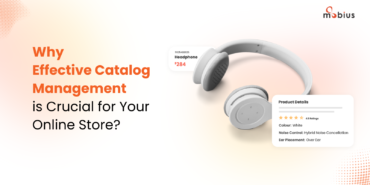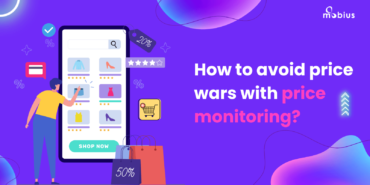People are going big on online shopping. Driving and checking in to a place and physically buying products for your daily or recurring needs is the way of the past, especially after the unanticipated global pandemic. And one industry that is benefiting from this ever-growing trend of online shopping is ecommerce.
There’s a huge rise in the number of online shoppers worldwide. As of 2020, 2.05 billion people shop online, which is one-fourth of the world’s population. Ecommerce players have a massive target market that continues to grow as more people shift towards online shopping. And there lies the opportunity for ecommerce websites to increase their revenue by engaging these online shoppers.
Now, if you are wondering how your ecommerce website can appeal to a large number of customers, you’ll soon find out.
What is an ecommerce website?
Any site that enables people to sell and buy products and services online as opposed to the traditional method of physical shopping is called an ecommerce website. Businesses can list products or goods, accept and process orders, ensure timely delivery, and after-sales service using an ecommerce website.
People weren’t always crazy about online shopping. But because of ecommerce giants like Amazon and eBay, shoppers could trust the whole idea of buying products online without physically checking them out. Now, why do you think that was? It was because these ecommerce websites were built to deliver the most seamless shopping experience to their customers.
The secret to having a successful ecommerce website is knowing the pain points your customers face while shopping online and delivering a smooth experience. If you plan to build an ecommerce website or redesign an existing one, these practices will help your website succeed. Let’s dive in.
Four practices for a successful ecommerce website
Start with the website design
The features and design of your ecommerce website speak volumes about the customer experience you offer. If your ecommerce website takes more than a few seconds to load, the customer journey will end before it even begins. A US-based consumer survey found that 90% of shoppers will abandon a slow-loading website. Therefore, rendering your website to lose out on potential customers.
Now, site speed is one characteristic of your website. Customers should see a simple, clutter-free page when they land on your website. It should be intuitive for any online shopper to navigate, explore, and buy products while being aesthetically pleasing to customers’ eyes. You need to showcase high-quality product images and videos that click with shoppers to increase the chances of conversions.
Moreover, today’s consumers use different shopping devices, like tablets, iPads, laptops, and phones. So ensuring your website maintains multiple versions and works smoothly on all devices is crucial. You can opt for ecommerce web design services to achieve your revenue goals.
Sell the right product at the right price
Ever wonder why a particular competitor’s website generates more revenue than yours? Maybe they have a better assortment of products or offer their customers the lowest prices. Perhaps it’s both. Unlike shopping from brick-and-mortar stores, a customer does not physically need to go to multiple stores to find a seller selling the right products and offering the lowest prices. They can do that online within seconds.
Therefore, you must keep a close eye on your competitors and their product and pricing strategies. For example, if your site does not sell shoes in the apparel category but some of your competitors do. Then, this would be a missed selling opportunity for your business. Similarly, if your products are on the pricier side than your competitors, customers would prefer shopping elsewhere.
The question is, how to stay updated on these aspects? Many ecommerce website owners follow the traditional approach of manually monitoring competitor sites to know how they price their products and the additional or new products they sell.
Although the manual approach might be feasible for businesses with limited products in their catalogs, it would not be done in real-time. You can use competitive intelligence to monitor competitors and get accurate information in real time.
Create the perfect product pages
We cannot stress the importance of having engaging product pages if what you are looking for is increased sales. It is no secret that content drives sales; the same is true for the ecommerce industry. So, what makes a product page perfect? Everything needs to be accurate and in an easily readable format, from the URL to the product title and the product features to the description.
Secondly, do not underestimate the power of product images and videos. Even a detailed and informational product page needs digital assets for the customers to see how the product appears or works. A report by StacksAndStacks.com suggests that 144% of online shoppers are more willing to make purchases after seeing a product video.
Moreover, your high-quality product content can help you rank on search engines better. If you optimize the product content with the right keywords for the product, there’s no stopping your website from appearing in the top search results. Having and managing engaging and pleasing product pages on your website can be tricky. Here, ecommerce websites can opt for content creation and imaging services to ensure a quicker turnaround and assured results.
Make the shopping experience a breeze
Easy navigation is an essential offering of any ecommerce website that should not be skipped. A seamless shopping experience will help you generate repeat customers. Once visitors learn how easy it is to navigate your website and purchase products, they’ll keep returning. You must design your website to make navigating it natural and intuitive for your customers.
You can offer your website visitors features like search filters and product comparisons to instantly find and compare products. However, search filters on a site will only work if products are well-mapped and organized across categories. An ecommerce website needs to have a solid information architecture to be search-friendly. You can get taxonomy recommendations from ecommerce experts for your ecommerce site to improve user engagement.
Conclusion
There are more than 26 million ecommerce sites worldwide, with new sites being launched every hour. To ensure your ecommerce website is successful, start by working on the areas mentioned above. We know how overwhelming it can be to work on all these aspects in-house. If you are looking for ecommerce services to help you, get in touch with us. Our ecommerce experts would love to understand your challenges and offer you the right solutions.







1 Comment
This article is really good and you described the 4 main important things to focus while developing the ecommerce website. This will help everyone who looking to develop their ecommerce business to online.